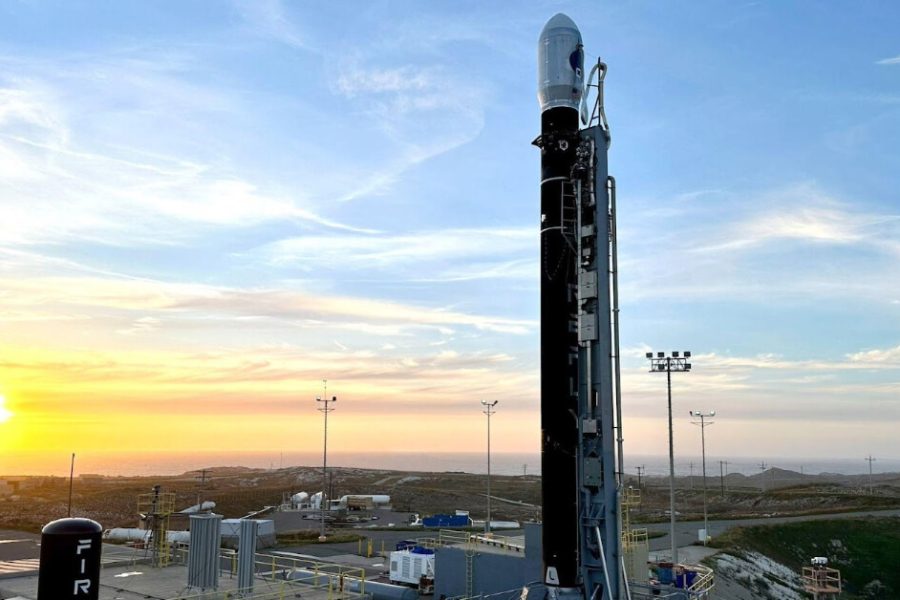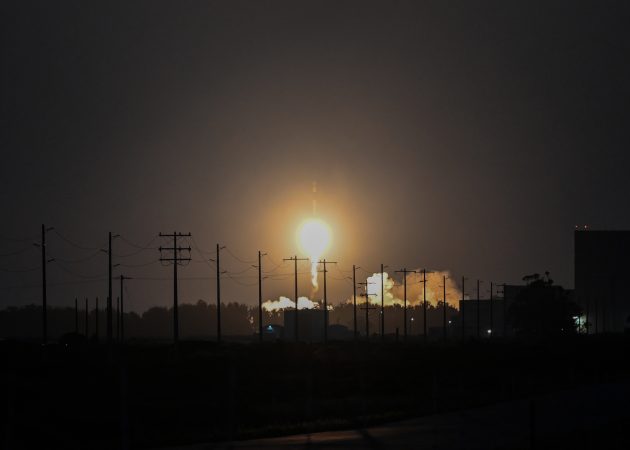
Two New Tactically Responsive Space Missions to Demo Maneuver in Orbit (Image Credit: airandspaceforces)
The Space Force’s “Victus” series, aimed at showing the service can respond to new developments in orbit on tactically relevant timelines, gained steam Oct. 4 with the announcement of two new missions in 2026.
Victus Surgo and Victus Salo, as the new missions are called, will offer new wrinkles to the “Tactically Responsive Space” (TacRS) effort by testing a new system for maneuvering in orbit and aiming not just at low-Earth orbit but geosynchronous orbit as well.
Both missions will be focused on space domain awareness.
Space Systems Command announced it inked a $34.5 million contract with Impulse Space, a startup founded by one of the first employees of SpaceX, for the two missions.
Each mission will send a spacecraft using Impulse’s ‘Mira’ Orbital Maneuver Vehicle (OMV), a propulsion system that provides swift “last-mile delivery” to carry payloads into space. After being launched into space, the OMV helps adjust or reposition the payload. The vehicle is designed to carry the payload up through LEO, MEO, GEO, or even to cislunar space.
“We are continuing to push the boundary to prove out how to quickly deliver on the warfighters’ urgent needs,” Col. Bryon McClain, SSC’s program executive officer for Space Domain Awareness and Combat Power, said in a release.

Victus Surgo includes a commercial off-the-shelf optical payload—often referring to a type of imaging system—carried by the OMV. Additionally, the mission will see Impulse’s first use of its ‘Helios’ technology.
The imaging system will initially be launched on a SpaceX Falcon 9 rocket into Geostationary Transfer Orbit (GTO)—a pathway to reach GEO. Once in GTO, the Helios will separate from the rocket and provide additional propulsion to help maneuver the spacecraft all the way up to GEO. The Helios vehicle can lift more than 5 tons of payload from LEO to GEO in less than a day, according to the company’s description.
Once in GEO, the OMV will help the optical payload readjust to its final position. The Defense Innovation Unit is co-sponsoring this mission and will add its own payload or equipment to the Helios system.
Victus Salo, on the other hand, will be launched into LEO on one of SpaceX’s rideshare rockets. It will carry a government-provided payload developed by MIT’s Lincoln Laboratory. SSC did not immediately provide any further information on the payload’s type or capabilities.
“Victus Surgo and Victus Salo will offer more responsive solutions to address urgent on-orbit needs,” said Lt. Col. Kahoa Miller, SSC’s materiel leader for Space Safari.
The projected launch timeframe for Surgo is “late summer/early fall of 2026,” while Salo is scheduled tentatively for the fall timeframe of 2026, an SSC spokesperson told Air & Space Forces Magazine. The spokesperson added that the exact launch dates are “still being coordinated and finalized.” The project is set to be completed by no later than December 2026.
The Victus series is part of the service’s broader “Tactically Responsive Space” (TacRS) initiative, aimed at drastically reducing the time it takes to launch payloads and improve readiness in response to potential threats.
“The commercial space industry is delivering products we need to provide highly capable options for future TacRS operations,” added Miller.
Last September, the Space Force set records with Victus Nox, deploying a satellite in LEO just 27 hours after receiving launch orders. Next up is an effort Victus Haze, a dual effort that Chief of Space Operations Gen. B. Chance Saltzman wants to go even faster than Victus Nox. Budget documents have also suggested another mission, Victus Sol, after that.
Victus Surgo marks the first TacRS mission deployed into GTO, with the final destination intended for GEO, the spokesperson added.
“The collaboration with Impulse, MIT LL, and many others further enables our ability to rapidly integrate, deploy, and operate on tactically relevant timelines,” added McClain about the two newly announced Victus missions.
Impulse Space was founded in 2021 by Tom Mueller, a former SpaceX engineer known for his work on propulsion systems. Early this year, the company welcomed retired Gen. John “Jay” Raymond, former Chief of Space Operations to its board of directors.








